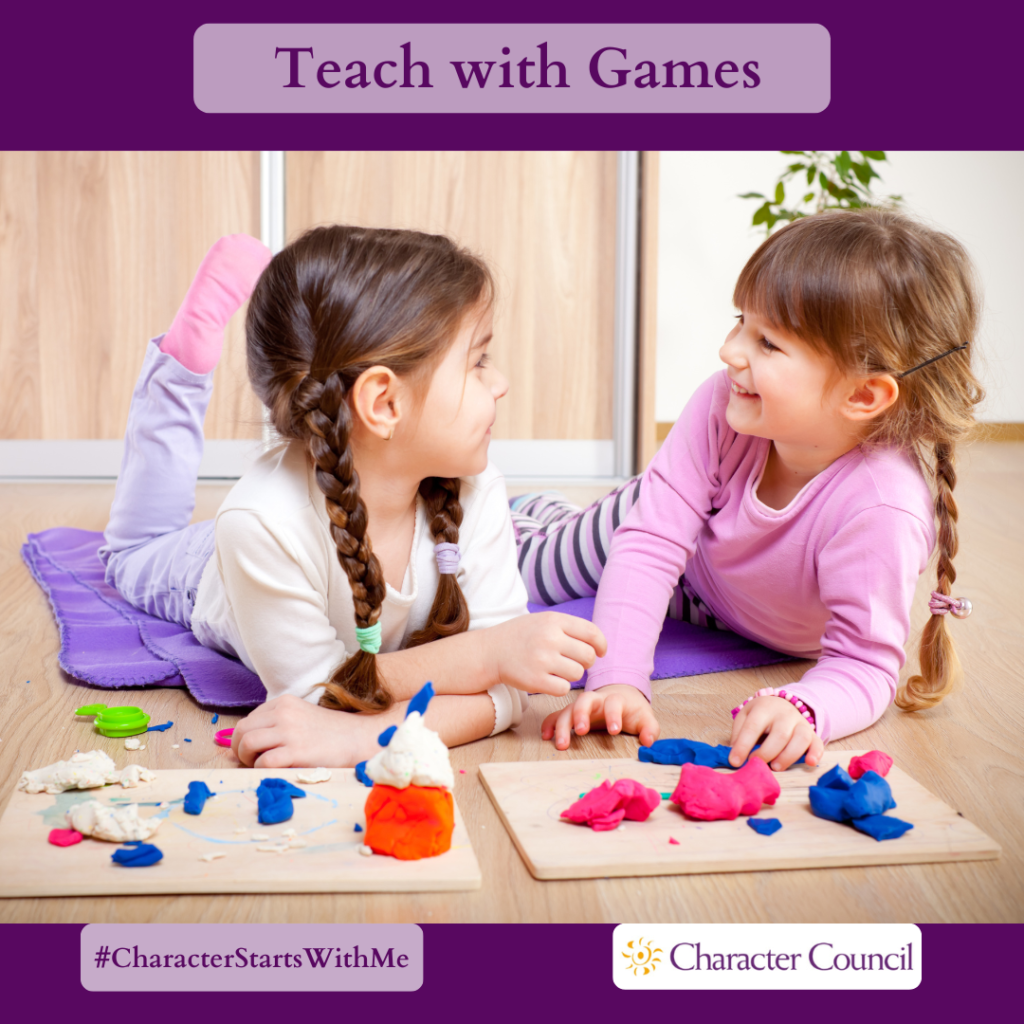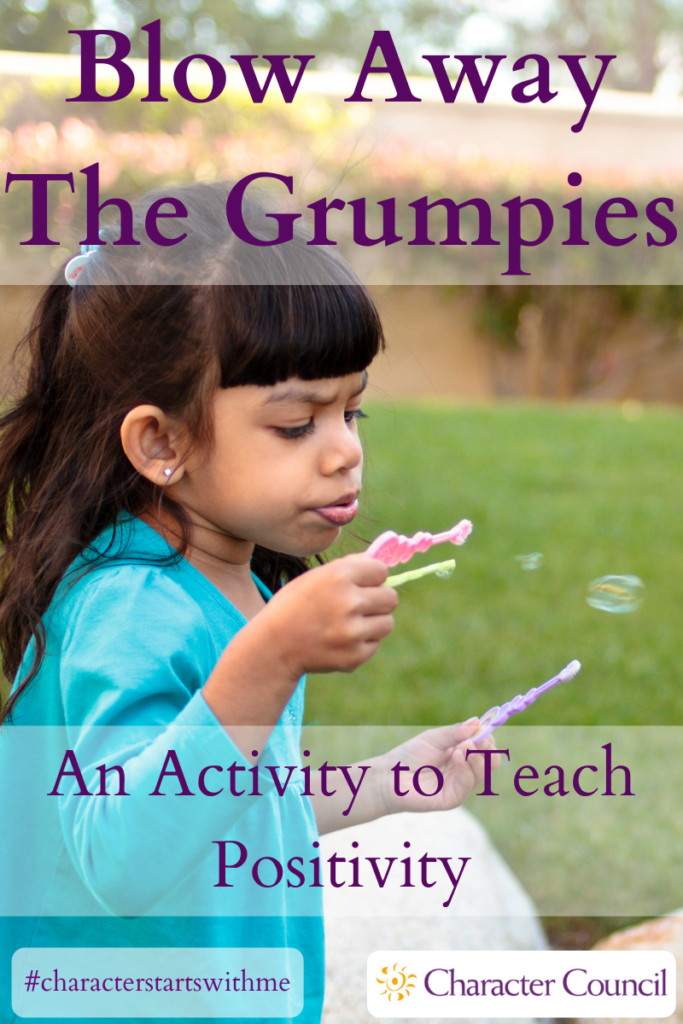
Positivity Activities
The activities here are fun ways to teach character. The game aspect makes the lesson more memorable. Each activity has processing questions at the end. Without processing the activity, the exercise is just a game. To make it a stronger lesson when you process it, relate the character quality to a core value that your organization promotes.
Consider picking a student to run the activity. You will need to give them time ahead of the activity to prepare. Another option is to pick a few students to run the activity for a younger classroom after you have run it for your class. Encourage your students to repeat it in the home for younger siblings or even parents.


Float Your Boat
For this activity, you will need a small amount of clay and a container of water. Roll 4 small balls, like regular marbles. While you drop the 4 smaller balls into the water, talk about how sometimes when times are tough, people get all rolled up within themselves and get discouraged about what is going on. When this happens, they sink to the bottom. Talk about what it feels like to be at the bottom.
Now take the remaining clay and shaped it into a boat. (Practice this ahead of time so you know how much clay you need and how to shape it.) If we open ourselves up to other people either by asking for help or offering to help others, we can stay floating on top. Put the boat in the water and watch it float. Pick out 1 or 2 of the smaller clay balls and place them in the boat. Explain that sometimes when we are down, being around happy people will rub off on us and we can reverse our mood.
Bully Connection: One of the reasons that some people turn into bullies is because they are experiencing some type of emotional or physical pain. They mistakenly think that bullying others will make others miserable and themselves feel better. This usually backfires. If everyone around you is miserable, you will be miserable, also. The next time you feel miserable, try to do things to make other people happy and you might just be surprised how much better you feel.
To process the activity, ask these or similar questions:
- When you saw the balls of clay sink, did you think of making a boat?
- Did you see the difference between the closed up balls and the opened up boat?
- Do you prefer to be around happy people or sad people?
- If you want to be around happy people, what do you have to be?
- Will you remember the boat the next time you are sad?

Blow Away The Grumpies
Using simple children’s bubbles, help the students learn to blow away the grumpies. In an outdoor setting, set up pans of ‘bubble juice’. Give each student a chenille stem and have them construct a bubble wand. Any shape will work. Tell the students to think of a negative thought (a grumpie) that they have about themselves or their world. Make them aware that they will not have to share this grumpie. It stays personal. Have them inhale slowly and then blow the grumpie out into the bubble. Watch the bubble until it breaks or floats out of sight. Let them do this several times. Try to maintain quiet during the exercise to create a meditative space. Now have the students close their eyes and do the exercise again but just imagining the bubble toys. You can talk them though thinking, inhaling slowing and blowing slowly out. Help them picture the bubble and it floating away. Encourage them to use this exercise in their head whenever they need to get rid of a grumpie.
To process the activity, ask these or similar questions:
- Is it fun to play with bubbles?
- Was it easy to come up with a grumpie?
- How did it feel to blow it away?
- Do you realize that most of the negative thoughts that we have about ourselves are simply not true or not true to the extent that they will cause us harm?
- How many thought that they were the only one with that particular grumpie? Realistically, many of the grumpies were probably the same.
- Will you use this exercise to get rid of negative thoughts and help you stay positive?

Focus
Have you ever been in a crowded room and heard your name mentioned in a conversation across the room? How did you hear that among all the noise? This exercise will help to explain that phenomenon. Your brain has a filter that filters out many of the stimuli that are around us. If the brain didn’t do that, we would be bombarded with so much input that we couldn’t function. Our name is allowed in by that filter so while you may not hear much of other conversations surrounding you, your name will get through. We can train that filter by what we pay attention to. Find a story from your past where you purchased something (a silver car, perhaps) and then saw it everywhere (I didn’t know there were so many silver cars!). If we have a sour attitude, we will see more negative things. If we have a sunny attitude, we will see more of the positive things.
Begin this exercise by asking the students to find all the square things in the classroom. Then pick a color that is prevalent in the room and ask for them to name the items of that color. Pick another shape and color and repeat the request for each. Pick a shape or color and ask them to focus on it for the rest of the day.
When finished, process the reading with these or similar questions:
- Was the Focus Game fun?
- Did you notice the shapes and colors before the game?
- Do you think you will see more of the color/shape the rest of the day?
- When we focus on something, we tend to see more of it. Do you think if you focus on positive things you will see even more of them?
If the students are old enough to understand the discussion on the brain filter you can look for more information on the reticular activating system or brain gating.